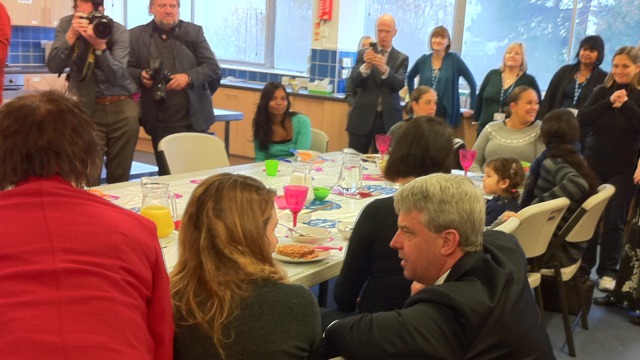I’m really not that sure how interesting it is for me to write about meetings. They certainly aren’t interesting enough for people to turn up and listen. Having said all that, there were a few interesting items on the agenda of last night’s Adult Care Services and Health OSC.
I was only there for part of it, my council role is a bit of an experiment in ‘cross-cutting’ (which seems to be causing undue confusion, I have to say) so I attended only for the ‘health’ and not the ‘adult care services’ elements. To give some select highlights:
10-627 Patient records
Despite my predilection for civil liberties and occasional concerns about the expansion of the state into private life I find it hard to get excited about these things! But given the appalling track record of the state on data security in recent years it possibly isn’t surprising that the local NHS were questioned heavily about how access will be controlled and the audit trials that will be put in place to ensure record safety. I think most of the committee members were satisfied.
From my point of view the question is of balancing risk. No system will be 100% secure and, I have no doubt, whatever safeguards are introduced someone will have enough malice or incompetence to circumvent them sooner or later. However, what we need to assess is whether or not the benefits a system that means different parts of the NHS can see your relevant medical history is worth the risk of potential security breaches.
Personally, I feel happier about having an electronic medical record than old paper copies that can get lost, burnt, mixed-up, misplaced or even burgled. But not everyone would share that view, it struck me that the NHS were putting a lot of effort into creating a system that could reassure most people their information is safe.
10-628 National Patient Survey
I posted about the results from this recently. The committee members were interested in exactly why some surgeries are performing so badly when compared to some of the excellent results that other practices got.
The local NHS stated that they needed to better understand exactly why there was severe dissatisfaction with some surgeries and what they needed to do to encourage choice. They were asked to return to the committee with details of what they were doing to improve those weaker surgeries.
10-629 NHS White Paper – Response to consultation
This was an interesting discussion. I’ve not posted much about the NHS White Paper, but it represents a superb opportunity. The council has long held a policy that it should be responsible for health commission. While the white paper doesn’t suggest that it goes someway towards it.
For a start the council would take on responsibility for public health (as it did until 1974), and for establishing a ‘Health and Wellbeing Board’ however, there are opportunities to work with the GP consortia providing, for example, support on things like procurement or analytical services. In turn, this will enable a better, more joined-up set of services to residents.
There seemed to be good support for the council’s position of moving rapidly to set up the Health and Wellbeing Board here and working with GPs to establish how it could all be implement. The local NHS said they were “fully supportive”. The opposition members also expressed their support for the council’s position, but couldn’t vote for it, citing issues like the government’s naming of the white paper as a bone of contention.
10-632 Local Involvement Network – Annual report
This was an interesting report, mainly because of the thought processes that it set me on. The Local Involvement Network (or LINk) (or @WandsworthLINk on Twitter) was established a few years ago, there is basically one per borough, and is a free membership organisation that exists to formally scrutinise health and social care services in the borough. The council provides support to it.
In the white paper they continue, except they will be re-named HealthWatch and given a significant proportion of the seats on the Health and Wellbeing Board.
I am half-planning a fuller post on them because it struck me that they are, basically, an unnamed part of the Big Society. I’ve posited before that the Big Society exists, but we just don’t recognise it as such. Yet. LINks are, to me, probably in exactly the same category. They are there scrutinising local health services on behalf of residents and patients and, I would contend, in a better way than many other statutory bodies (by focusing very much on the ground level experience, than management level statistical outputs).
Maybe the first thing we should be doing in the Big Society is identifying and renaming all those parts that already exist.
There were several other health related items on the agenda. You can see the full agenda with linked reports on the council’s website.

